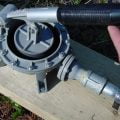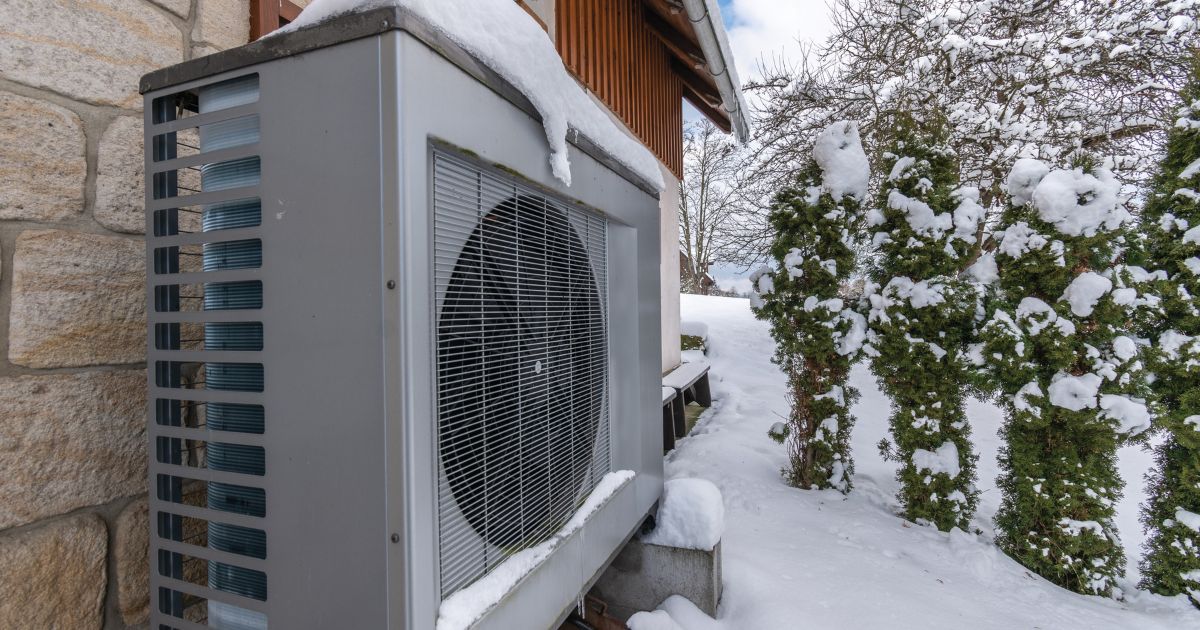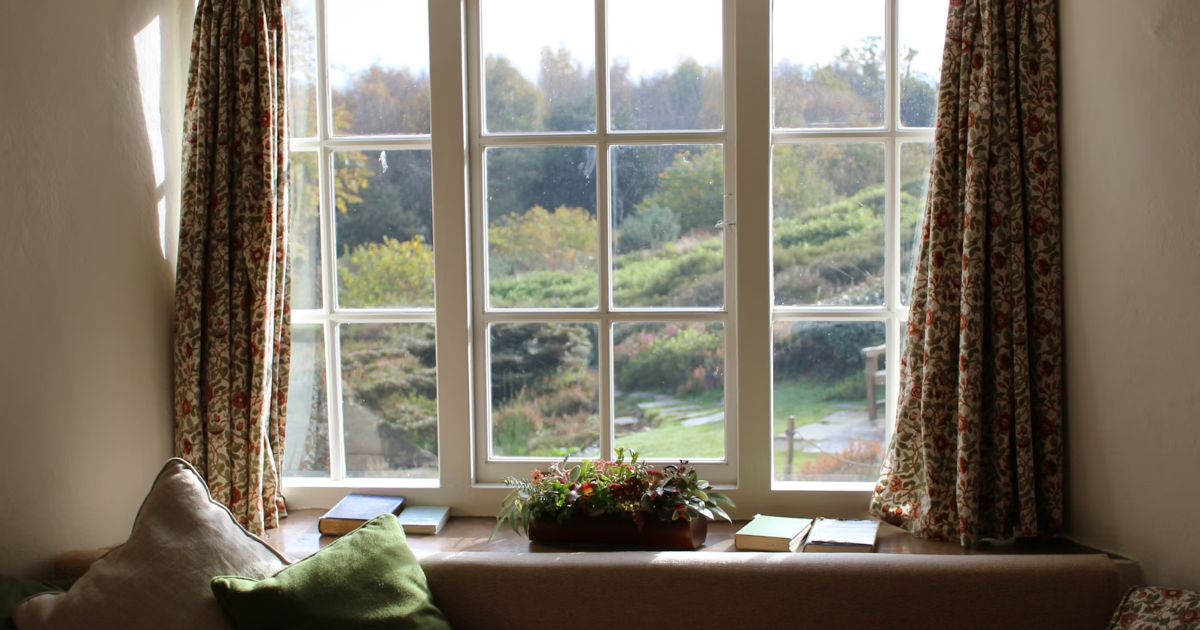Our Canadian climate makes reliable plumbing a challenge sometimes, especially when it comes to regions with insufficient soil cover to stop pipes from freezing during winter. I’ve wrestled with shallow-soil building situations since moving to the country in the mid-1980s. I’ve seen a number of different approaches unfold over the years, and one of the best freezeproof plumbing solutions I’ve found comes from a small Canadian company in the land of rocks and trees.

When it comes to keeping pipes from freezing, understand that the challenge is technically different when dealing with water supplies versus sewage drain lines. Both systems for freeze protection rely on electric heating cables, but the similarities end there.
Lorne Heise began his professional career as an electrician, but after he and his wife, Robin, left the bustle of Toronto to live in the soil poor, cottage-rich region of Muskoka, Ontario, they founded a company called Heat-Line. I tracked Lorne down more than 10 years ago, following stories I’d heard about his legendary waterline freeze protection products installed around the world. It’s not often that you meet someone who is as excited about protecting pipes from freezing as Lorne is.
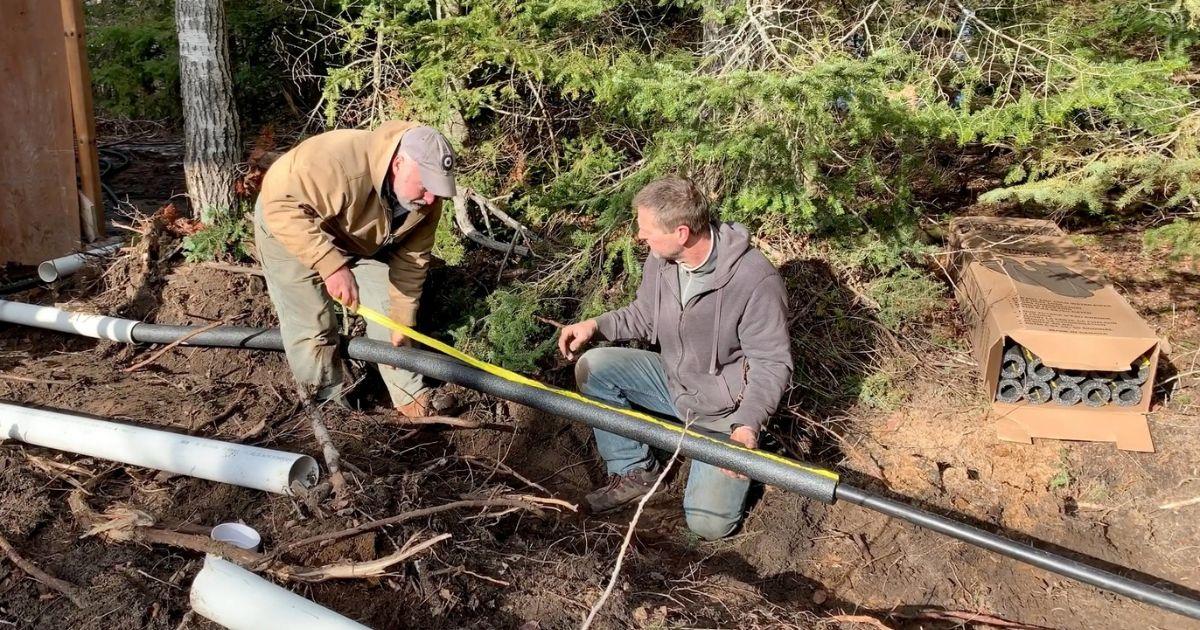
Freezeproof Water Supply
There are several ways to keep water supply lines from freezing when they can’t be buried below the frost line, but the trick is making it happen reliably and with minimal electricity use. The first time I installed a Heat-Line product for a neighbour was more than 10 years ago. The situation involved a 55-foot run from a drilled well on a site with only 12 inches of stony soil above bedrock, and I used a polyethylene pipe with a self-regulating heating cable moulded into one side to keep things frost-free. In this case, “self-regulating” is important. It means the cable adjusts its heat output to the surrounding environment.
One location on the cable might be drawing very little electricity if it’s above freezing, while a colder section could have greater current draw and more heating action because it’s below freezing. Couple this kind of smart cable with a thermostat system that turns the entire system off when pipe temperatures rise above freezing, and you’ll enjoy a very frugal use of electricity.
That first installation I put in included preformed foam pipe insulation around the water supply line, all encased in a 4-inch ABS pipe for physical protection.

Where the waterline turns upward and goes vertically into the building as it sits on piers, I replaced the preformed foam sleeve with spray foam insulation injected into holes in the ABS. I couldn’t make the curve
inside the ABS with the sleeve insulation, but the spray foam injection did the trick. With the thermostat sensor located inside the coldest part of the installation (the vertical part above ground), the electricity switches on less than half the time, even in the coldest weather. The system makes no noticeable increase in
annual electricity costs.

Keeping Drain Lines Draining
As long as a drainpipe is sloped consistently and drains completely, it might never get blocked with ice, even if it’s fully exposed underneath a raised building or buried by insufficient soil to keep the pipe above 0°C. But hope can be a dangerous thing when it comes to plumbing.
If a blockage develops during winter in an otherwise reliable drainpipe, or enough internal frost builds up to clog the flow, it’s bad news. In most parts of Canada, a 4-inch sewer line frozen solid with “ice” might not defrost until the robins have been back for weeks. And if something this ugly happens to you, you’ll feel about as good as the stuff clogging your sewer line.
Believe it or not, the most common location for rural sewer lines to freeze is just up the main pipe from the septic tank. That’s not what you’d expect, given the fact that septic tanks generate considerable heat, right? The trouble is, it’s this heat that indirectly causes blockage. Warm sewage temperatures lead to high-moisture air and steam wafting up the sewage line from the septic tank. As this very humid air cools in the pipe, the moisture it holds condenses out as frost. Extended periods of cold weather can trigger enough frost to plug the pipe solid and fill it with sewage that freezes. Once that happens, every drain in the house becomes useless for a long time.
An electric heating cable can defrost a problem like this, but only if it extends all the way to the septic tank, so when you size your heating cable, don’t go short.
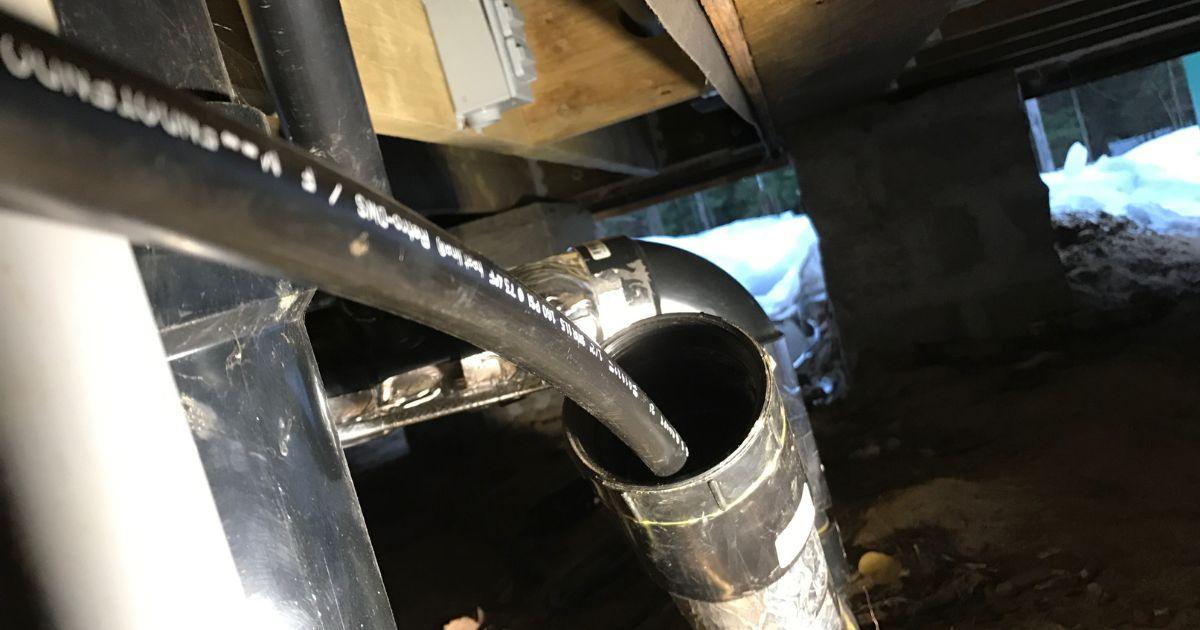
So how do you make sure drain lines never freeze when you don’t have enough soil? It comes down to electric heating cables, and there are two options: external and internal. Until recently, external was the only choice for drainpipes because plumbing codes prohibit any electrical cable from being located inside a drainpipe. The danger that code authorities are concerned about is the very remote chance of an explosion caused by a spark surrounded by volatile sewer gases.
External application of the heating cable sidesteps the chance of pipe blockage caused by sewage debris grabbing onto an internal cable and building up, but there are problems with external cables. Besides the fact that the external approach is difficult to install around buried drainpipes, the transfer of heat to frozen water
is inhibited by the pipe wall.

A few years ago, I installed two types of heating cables for drain lines: One fastens to the outside of a fully exposed insulated pipe underneath a building on raised piers; the other sits inside a buried drainpipe. Heat-Line is unique in the world because it has the only system that’s code approved for use inside a drain line.
The Heat-Line Retro-DWS system I installed includes a self-regulating heating cable that’s sealed inside a half-inch-diameter pipe. Technically speaking, the cable is not inside a drain line: It’s inside a pipe that’s inside a drain line. This makes it OK, code-wise. Another handy feature of the in-pipe approach is that you can push the heating cable a long way as you’re feeding it in. You don’t need to fish it. In my own situation, I easily pushed the pipe 130 feet from the building to a septic tank through a 4-inch PVC pipe. I’ve heard of situations where Retro-DWS was pushed a whopping 400 feet by hand without buckling.
The reliability of your water supply and drain system is a big deal, and if your site doesn’t have enough soil, you’ll need to make up for this with engineering, care and the right kind of technology. Do it right, and your water system will be just as reliable as if it were in the city.
Steve Maxwell and his wife Mary live on a 90-acre modern homestead on Manitoulin Island, Ontario in a stone house they built with local materials beginning in 1985. Steve is Canada’s longest-running home improvement and how-to columnist and editor of Home and Property. He divides his time working on the land, building things large and small, and creating articles and how-to videos that teach sustainable, self-reliant, hands-on living skills.



